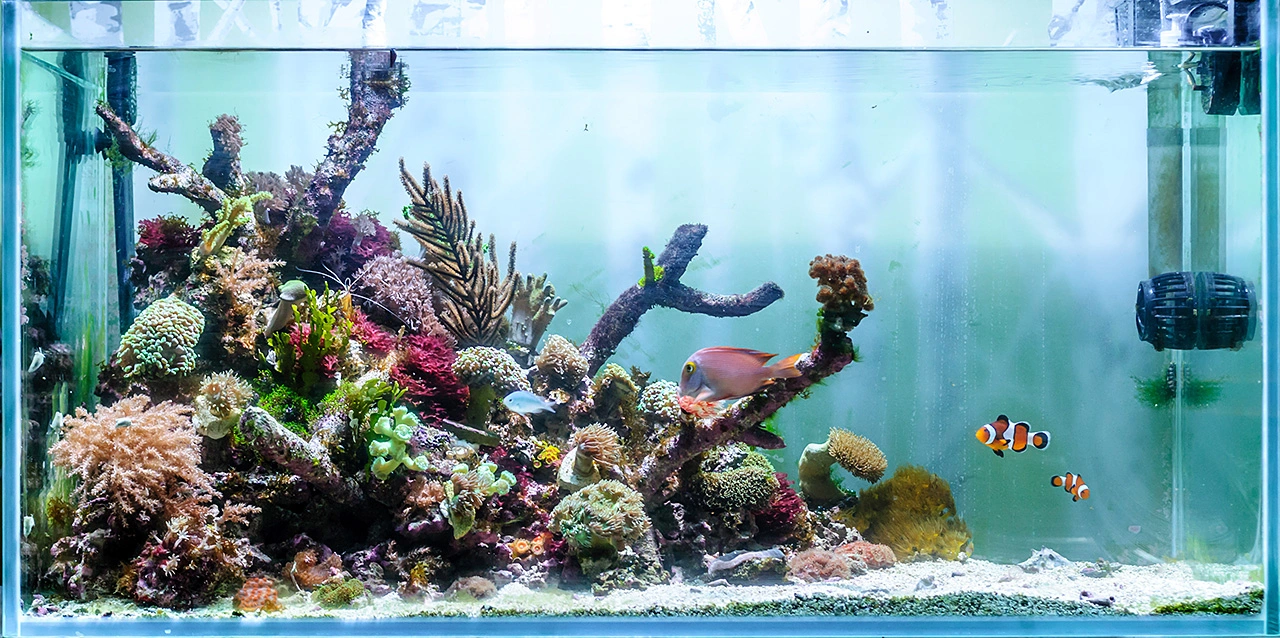Stunning 50-Gallon Reef Tank – hey's TOTM | NanoReef

Tank Specifications
Volume: 50 Gallons / 189 Liters
Dimensions (L × W × H):
36.0" ×
18.0" ×
18.0"
91.4cm ×
45.7cm ×
45.7cm
Equipment List
No equipment information available
Frequently Asked Questions
How often should I perform water changes in my reef tank?
For this specific setup, water changes are infrequent and can happen several months apart. The tank owner relies heavily on macro algae for nutrient export, allowing for this extended interval between changes. However, it's essential to monitor water parameters regularly.
How do I know when to change the carbon in my filtration system?
A sign to change the carbon is when the corals show poor polyp extension, which may indicate stress from allelopathy. Regularly check your corals and be attentive to changes in their behavior.
What is my main source of nutrient export in the tank?
The main source of nutrient export is the macro algae that are kept in the display tank. Regular trimming and removal of excess macro algae help maintain balance and prevent algal overgrowth.
What do I test for in my reef tank and how often?
The owner tests calcium, alkalinity, magnesium, and nitrate approximately every other week to ensure that levels are within the appropriate ranges for coral health and growth.
What is the feeding schedule for the fish and other creatures in the tank?
The feeding schedule consists of feeding 2 small cubes of food daily or 1 large cube split into two feedings. Foods include mysis, oyster eggs, krill, clam, cyclops, baby brine shrimp, and brine shrimp, along with some pellet food fed sparingly.
How can I ensure proper nutrition for my corals?
While the tank owner doesn't emphasize specific coral feeding, maintaining a varied diet for the fish and using high-quality flakes or pellets can help improve overall water quality, benefitting the corals indirectly. Some corals might benefit from targeted feeding of coral foods.
How should I approach aquascaping my reef tank?
When aquascaping, consider the overall aesthetic and structure you want to achieve. The owner drew inspiration from Ikebana (flower arrangement) and wabi kusa (natural style). Creating a rock structure that guides the eye and allows space for corals to grow naturally can enhance aesthetics.
How do I choose the right corals for my tank?
Choose corals based on how they fit into the overall design and color palette you envision for your tank. The tank owner emphasizes simplicity and coherence, focusing on a pleasing overall appearance rather than collecting rare species.